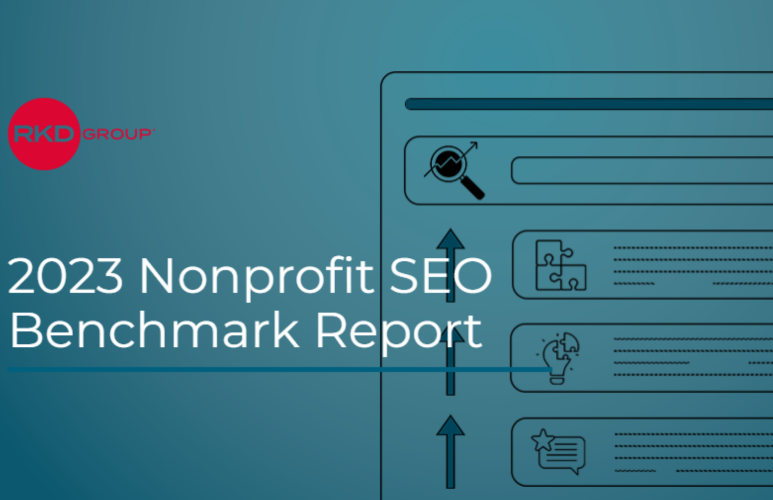Google is constantly tweaking its ranking algorithms. External analysts obsessively attempt to determine which factors, such as engagement, loading time and connections with other websites, among many other considerations are key to the highest rankings. Within two factors, user experience and page loading speed, sites hosted by nonprofits lag those of commercial entities.
The shortfall is not insignificant: 80% of nonprofit websites were ranked “poor” in terms of their mobile performance, and 86% of nonprofit websites were judged to “need improvement,” according to data in the 2023 Nonprofit Website Performance Report from fundraising firm RKD Group in Plano, Texas.
The report evaluates nonprofit websites by five user experience and site performance metrics:
- Cumulative Layout Shift — the rate at which website content unexpectedly shifts or appears to jump;
- First Contentful Paint – this marks the first time a user can see anything on a newly loaded screen;
- Largest Contentful Paint — the point at which a page’s largest content has loaded;
- Speed Index — which shows how fast a page’s content is visibly populated; and,
- Total Blocking Time — the amount of time before a site is ready to respond to user input. The report also considers other metrics, such as accessibility by people with disabilities.
Mobile websites hosted by nonprofits racked up an overall 79.8% “poor” rating. Among individual nonprofit sectors, mobile-based websites hosted by relief and development organizations fared the worst, with 90.9% judged as “poor.” Other nonprofit silos that fared poorly included social services (87.8% poor rating), environmental nonprofits (85.5%), food banks (81.9%) and veterans’ organizations (80%).
Desktop website evaluations tended to fall into the middle-ground “needs improvement” category by a wide margin. Overall, 71.4% of desktop-hosted websites were found to need improvement, with 14.3% judged poor and an identical amount found to be good. Among individual silos, 92.9% of service animal-related sites were found to be either poor or in need of improvement, followed by 90% of veterans’ organization sites, 89.9% of social services sites, 87.6% of food bank sites and 86% of hospital sites.
While the report does not go into detail for every performance metric, it does provide insight into how websites of nonprofits, whether accessed via mobile or desktop, fare regarding several of them. By and large, the results are not pretty.
The first contentful paint factor is key to good user experience. When initial content takes a long time to load, users are more likely to leave the page and in this case “a long time to load” can be a matter of two or three seconds. Only 7.6% of nonprofits scored a good rating for their desktop first contentful paint score, but even that was double the 3.2% scoring a good rating for their mobile websites.
Visitors they get turned off to a site when they have to wait for large images to load. The rate at which a large image loads it known as the largest contentful paint score. Since websites often have a “hero” image — a large, splashy image atop the home page – a fast loading time is key. Unfortunately, only 26.7% of nonprofits have a good rating in this category for the desktop versions of their sites, while their mobile site ratings were substantially worse, with only 4.2% rated as good.
The cutoff time for websites to score a good rating regarding speed index – the loading time for the whole page – is 3.4 seconds. In online time, that’s a reasonable and achievable wait, yet only 15.5% of websites accessed via desktop managed to achieve it, as did 16.7% of websites accessed via mobile devices.
There are a few areas for which nonprofit websites scored reasonably well. Nonprofit website designers acknowledge the importance of search engine optimization, if their performance scores are any indication. More than one-third (35.5%) received good ratings for SEO rankings for their desktop websites, as did 31.7% of their mobile devices. While these percentages are better than their rankings for other aspects, they do reveal room for considerable improvement within the sector.
Nonprofit websites also show promise within their accessibility scores — how a website accommodates views from users with disabilities or impairments. Nonprofit websites accessed via desktop computers scored a 36.3% good rating, as did 33.9% of websites accessed via mobile devices.










